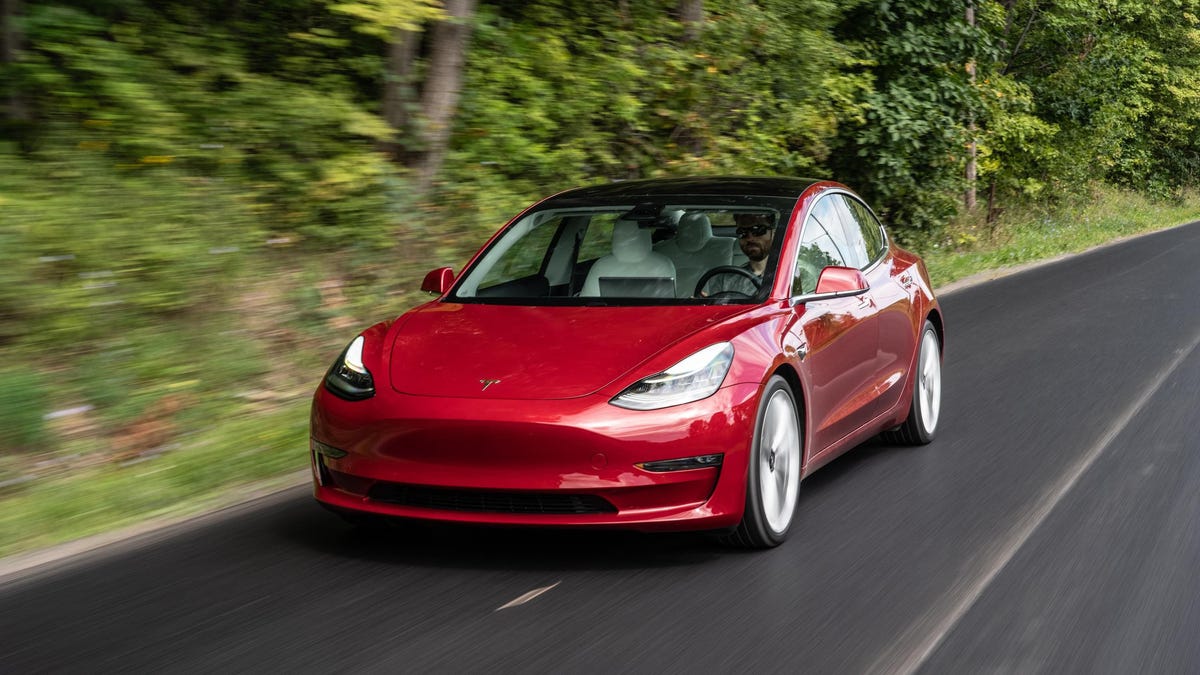Tesla Model 3 European deliveries have Autopilot turned off
Here's why the first examples of the electric sedan are arriving on the continent without a key feature.

Tesla fans have been eagerly awaiting their chance to snap up the company's sharp-handling Model 3 electric sedan for some time now, and while the first examples are now ashore at the Belgian port of Zeebrugge, these vehicles are reportedly missing one of the electric car company's marquee features: Autopilot.
The suite of advanced safety features that's best known for its semiautomated driving capabilities has not yet received approval from European safety regulators, says the Los Angeles Times. According to the report, RDW, the Netherlands Vehicle Authority that's in charge of such regulations for Europe, has yet to sign off on the tech's road legality. This, despite the underlying vehicle reportedly having been approved for sale.
According to a Tesla spokesperson reached for comment by Roadshow, "We are planning to enable Autopilot in Europe beginning next week." That same official's response didn't clarify if the automaker expects to receive type approval by that time, saying only: "Right now our statement is the extent of what we're sharing."
Autopilot is already approved for Continental consumption in its Model S and Model X vehicles.
It's not immediately clear how many of the first batches of Tesla Model 3s were ordered by European customers with the optional technology, which costs around $6,000 in Europe. It's also not clear if those buyers will be offered a refund if they can't use the technology for an extended period of time. Roadshow asked if Autopilot hardware and software remains dormant in these cars, ready to be enabled (presumably through an over-the-air update) once the tech's legality is established, but Tesla declined to clarify.
Like Tesla itself, Autopilot remains mired in controversy. Tesla CEO Elon Musk has repeatedly referred to the tech as "self-driving" technology. However, by accepted auto industry standards, Autopilot is only partially automated -- essentially, it's adaptive cruise control with lane centering and on-demand lane changes. In fact, Tesla literature itself advises that AP is a hands-on, eyes-on system. However, unencumbered by onboard watchdogs like an advanced driver monitor (such as a driver-facing camera), many drivers have routinely ignored those guidelines, going so far as to play phone games or even fall asleep at the wheel. A number of high-profile fatal accidents have also resulted from alleged misuse of the technology.
Musk himself has been seen in more than one video hands-off, directly contradicting his company's own stated limitations about the technology.
Tesla Model 3 sales slid precipitously in North America in January, with reports suggesting monthly deliveries plummeted by as much as 74 percent (Tesla itself only reports sales numbers quarterly, so such reports are merely tracking estimates).
For its part, the Silicon Valley automaker has stated that it's focusing on ramping up its European and China market presences at the expense of US sales, yet at last count, the automaker still says it has hundreds of thousands of reservation holders in North America.

